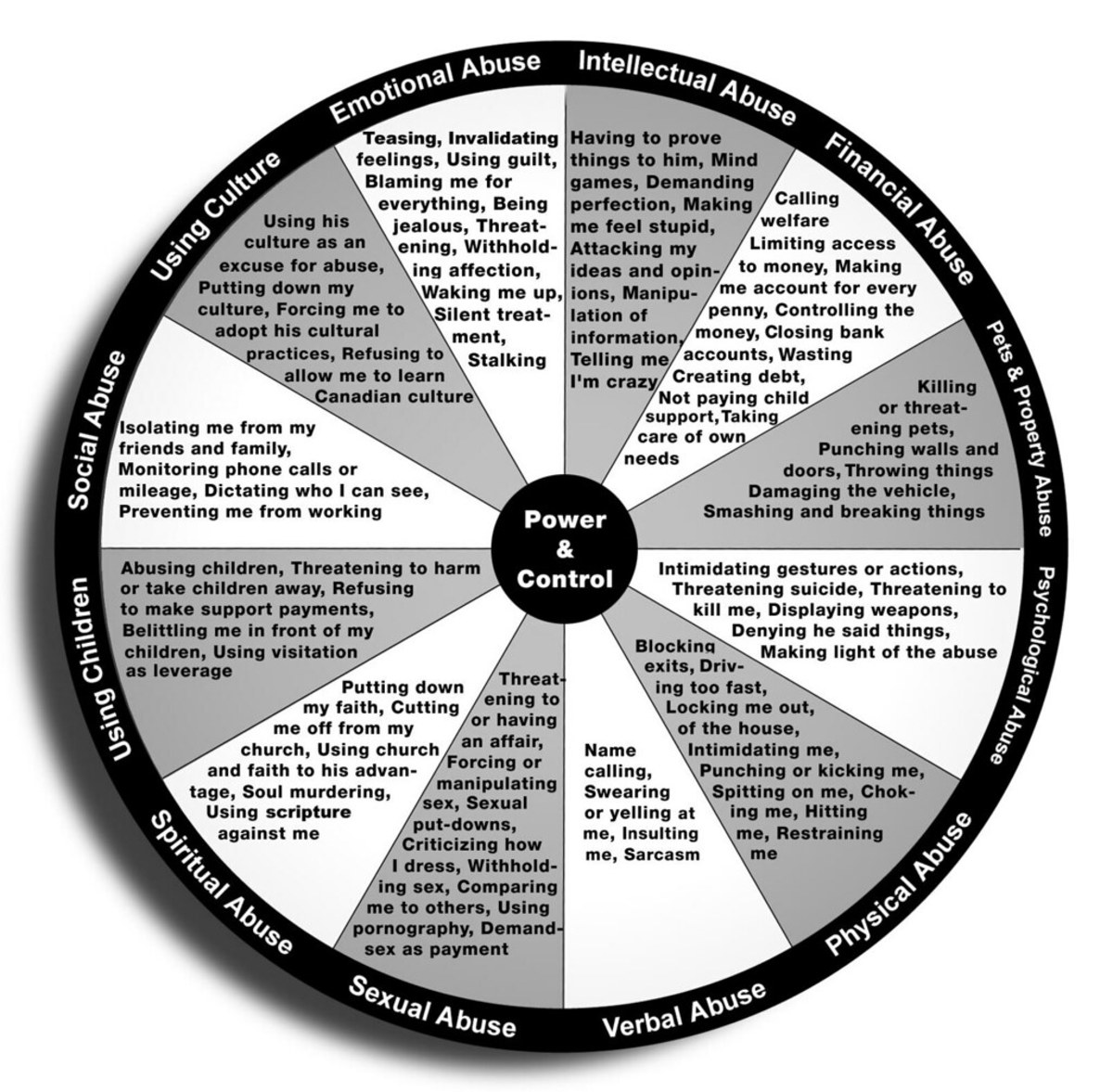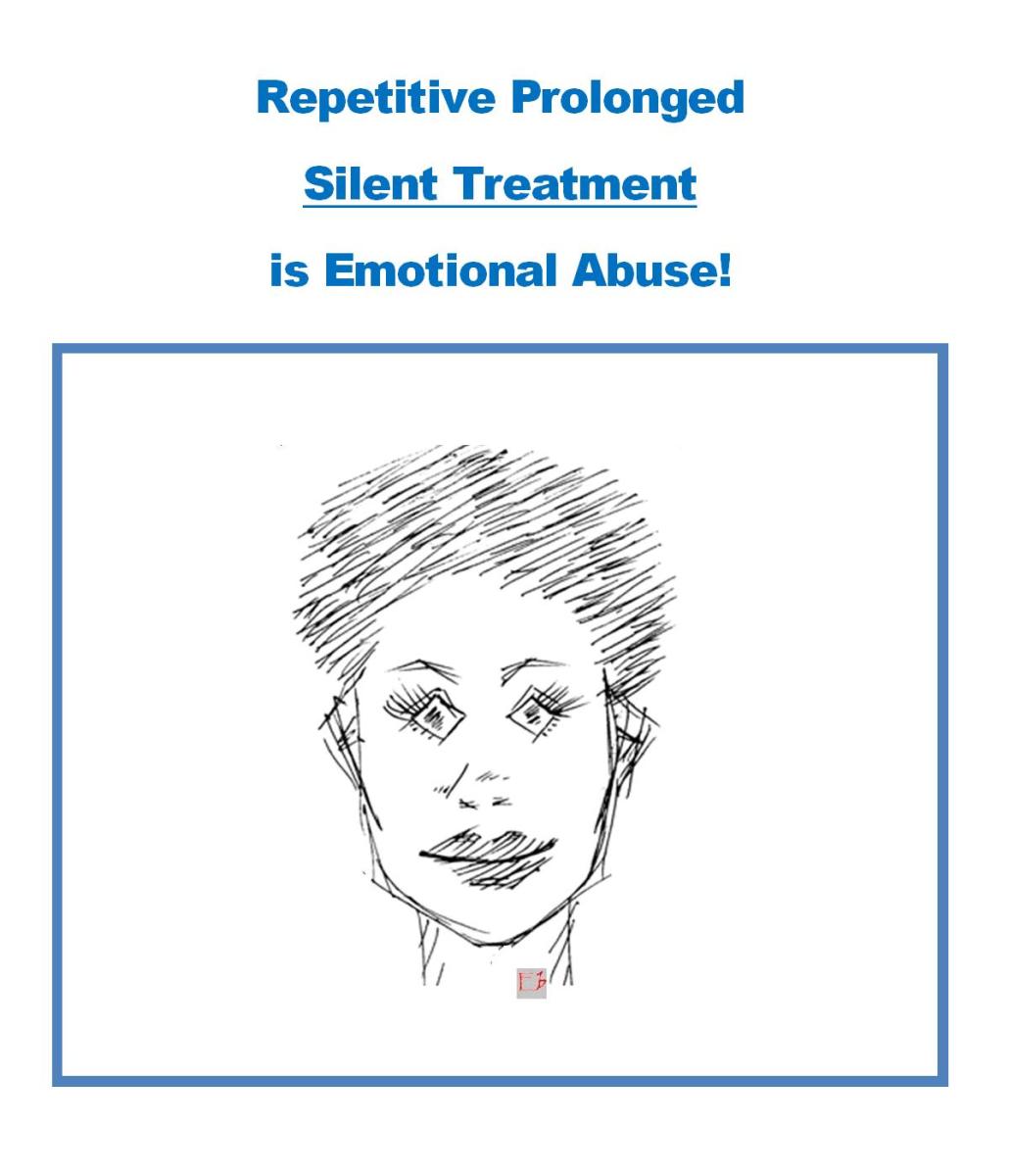Domestic Violence Issues and barriers
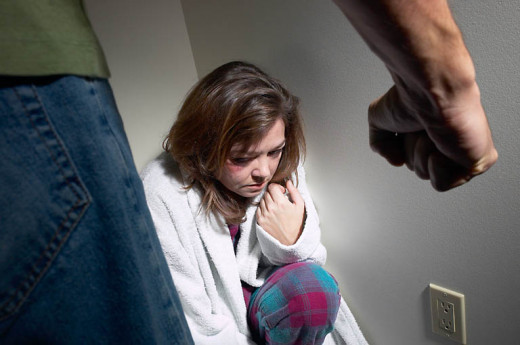
1.0 Introduction
Domestic violence is an issue that has plagued the human race for many thousands of years. Since the beginning of time, men have used their strength over their women counterparts to dominate, and gain a sense of control over another human being. Throughout history, people have blatantly advocated for domestic violence, insisting it is the natural evolution for a relationship. The ancient Romans for instance, allowed men to beat their wives with a brick for a number of seemingly insignificant reasons. These included; speaking out if line, talking to other men and cooking to an unsatisfactory standard (Evans, 1992). This is a shocking example of domestic violence that was accepted by society as normal.
Did you know..
- 23% of Australia women whom had been in a marriage or de facto relationship had experienced violence
- 43% of women whom had been in a previous relationship reported some form of violence
- Half of the women whom had experienced domestic violence experienced it more than once a week
Source: http://www.adfvc.unsw.edu.au/PDF%20files/Statistics_final.pdf
1.2 What is the issue?
Domestic violence has been an issue that has lasted through the centuries, and has continued to plague modern society. In Australia for instance, 23% of women either married, or in a de facto relationship have suffered from violence from their partner (Mulroney, 2003). This is a shocking statistic, as it means that nearly 1 in 4 women will have at some stage been exposed to violence or been the victim of it.
Domestic violence is the act of either physically, emotionally, spiritually or sexually abusing a partner, be it male or female, for the abuser’s own self-gratification (Heldman, 2013).
Domestic violence is a world issue, with Men and Women from many different religions and cultures being either exposed, or victims to domestic violence. Domestic violence in countries that follow ‘Sharia Law’ for example, have a much more tolerant view towards domestic and family violence, with some extremist Muslims even going as far to condone domestic violence (Rauf, 2005). This demonstrates the barriers that need to be overcome in some countries to put the issue of domestic violence to rest. However, with such a heavy emphasis on religion in these Islamic countries, strengthening community action in regards to domestic violence is a very difficult issue to overcome.
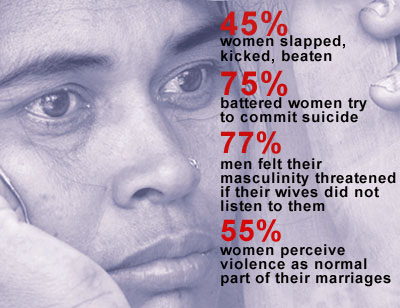
2.1 Extent of the Problem
In Russia, women outnumber men 100 to 88 (Petrova, 2004). This means that there is considerable competition for women to be able to meet men, form a relationship and get married. The culture of Russia however is very taxing on women. There is a social custom where the men go out with other men, drinking to the point of intoxication. They will do this every day, developing alcohol dependencies and abusive habits. It is expected that the wife will have a meal prepared for the male when the partner gets home. Complaints from the woman can lead to physical and emotional violence (Petrova, 2004). Due to the difficulty in finding a husband in Russia, many women are afraid to leave their partners. This is demonstrates how attitudes, beliefs and cultures can be barriers for women truing to leave an abusive relationship.
In Australia, there are many different religions present. This means that attitudes and beliefs about how women should be treated vary from person to person. Islam is a religion that has gained some notoriety in the last few years in regards to the treatment and viewing of women’s rights. Melbourne based religious leaders of the Imams (A branch of fundamentalist Muslims) condoned rape and domestic violence within marriages (Zwartz, 2008). They were training Muslim men to actively partake in marital rape, and abuse of their spouse because their perception of the Quran allows that kind of behavior within a marriage (Zwartz, 2008). This demonstrates how in Australia, the barriers to change can also be cultural and religious, making the issue of domestic violence even more difficult to control.
Modern society has become aware of the damage that Domestic Violence can cause women, and because of this, there is a certain stigma attached to men who are violent to their wife or partner. They are viewed as weak men whom cannot deal with their anger issues, and take out their emotions on their family. There are those however who accept that wife beating in the form of domestic violence is a way for men to control their wives. For instance, a survey conducted in Turkey showed that 34% of men believed that violence was ‘occasionally necessary’, and 28% believed it was necessary to discipline women (News, 2013). This further demonstrates the extent of the problem on a world scale, with the development of men’s marital personal skills being underdeveloped globally.
2.2 Barriers to change
When it comes to the issue of domestic violence, there is a social perception that women should just leave the abusive relationship, these are the attitudes and beliefs of people who have never been exposed to a situation of domestic violence. Many people assume that women who stay in an abusive relationship are weak, and are not worthy for a real relationship. This social perception of domestic abuse disables women from tackling their relationship issues, and leaving an abusive relationship (Healy, 2005). It also demonstrates a lack of community action in the subject of domestic violence, as people are still unaware of why people continue to involve themselves in abusive situations. This also demonstrates a lack of personal skills in the general community, as people’s attitudes and beliefs and attitudes are outdated in the area of domestic violence.
There are many other barriers that prevent women from leaving an abusive relationship. These are usually from a lack of education and personal skills regarding the issue. The Main barriers that prevent women from leaving an abusive relationship are; Fear for personal wellbeing, Isolation from society, Promises from the abusive spouse and Pressures from cultures or religions (Centre, 2013).
The first major barrier to overcoming domestic violence is fear for the victim’s wellbeing when he or she leaves the abusive partner. This reason can also encompass fear of financial wellbeing, fear for personal wellbeing and fear of emotional wellbeing when leaving the abusive relationship (Michigan, 2006). There are many cases where a spouse has been abused after they have left the relationship. According to research conducted by the ‘Domestic Abuse Shelter, Florida’ women are 75 % more likely to be killed after leaving an abusive relationship than if they were to stay in the relationship (Shelter, 2008). For example, in ‘Donna’s story’ she leaves her relationship, seeking help at a community women’s refuge. Her ex-husband begins stalking her, trying to find out where she is, even impersonating a police officer to acquire information as to her whereabouts (Donna, 2009). This shows that even after leaving a domestic violence situation, the victim can still be at risk of even more violence if not protected properly.
Another reason as to why victims of domestic violence are afraid to leave a situation of abuse is due to the possibility of societal isolation (Centre, 2013). Victims of domestic violence sometimes believe that is they leave their partner, they won’t possess the personal skills to be able to look after themselves in the world, and will be isolated as a result of this (Michigan, 2006). This means that there are many women whom have had their self-esteem so beaten down that they believe they will be isolated from society when they leave their abusive partner.
Has domestic violence ever affected you?
Services available in Queensland
2.3 Evaluation of services available
The Ipswich Women’s Centre against Domestic Violence is a service open to women that provides a number of different services for women and children dealing with domestic violence.
The centre was opened in April 1994, and aims to eliminate Domestic violence in households. They work exclusively with women and children, whom are often victims of domestic violence, and require counselling and support (IWCADV, 2010). The centre offers a number of programs that are developed for women and children, these are; Family Counselling Program, Crisis Response program, Court Support Program and Community Development program. These programs require dedicated staff to run each program. There are eight people working at IWCADV full time, inclusive of three people in charge of administration and management (IWCADV, 2010).
They are funded primarily by the state government, but also accept donations from the public. They receive approximately $896,293 from the state government, and are able to run the previously stated programs on this funding (IWCADV, 2013). They do however face limitations as a result of lack of funding. They have stated that they have to turn women, children and families away from counselling services due to lack of staff, time and resources. They are also unable to meet community requests to provide workshops, training and speeches to schools, workplaces and communities due to lack of time and resources (IWCADV, 2013). This in turn means that they are unable to effectively prevent the issue of domestic violence by developing children’s personal skills at a young age (IWCADV, 2013).
Extra funding for IWCADV could provide them with extra staff, counsellors and resources. They would be able to accept more clients into their programs, reducing their turn away statistics and dealing with more cases of domestic violence. They would be able to be able to have Torres Straight Islander and Aboriginal workers, to provide support services to increase accessible appropriate services (IWCADV, 2013). They would also be able to provide men whom partake in domestic violence to develop their personal skills in order to become advocates against domestic violence.
A program called ‘Love Bites’ is an initiative by NAPCAN that aims at preventing domestic violence by targeting children in schools. This program is designed to educate middle and high schoolers about how to maintain healthy relationships, without the need for violence or abuse within the relationship (NAPCAN, 2008). The program has since been adopted by IWCADV, and is there new service available to schools. The service provides training for teachers to be able to teach the program. There is also a day workshop, where representatives from the Love Bites program go to the school and further educate students about healthy relationships (NAPCAN, 2008). The program is effective in preventing domestic violence as it targets children, both male and female, about the negative effects of domestic violence, and ways to deal with abusive situations. This develops their personal skills and enables them to help break the cycle of domestic violence.
There are barriers apart from lack of funding that IWCADV face. For example, the lack of understanding about domestic and family violence in the wider community can limit the effectiveness of the available programs (IWCADV, 2013). Lack of understanding of domestic violence is a barrier as there are many women in the broader community who do not understand that they are in an unhealthy relationship or that there are support services available to people in their situations.
Media and objectification of women also plays a part in the continuation of domestic violence (IWCADV, 2013). Objectification of women can lead some men to believe that they are simply objects for sex (Heldman, 2013). This means that there are men out there who believe they are entitled to sex when in a committed relationship with a woman. When they don’t receive sex from their partner however, they feel as though there wife doesn’t know their place, and they lash out, either physically or verbally. This demonstrates how the media and objectification of women can promote sexual, verbal and physical violence. This is simply another barrier that IWCADV has to attempt to overcome.
The second Service that will be evaluated that is available to women is ‘North Queensland Domestic Violence Resource Service’. The service was established in 1994, and aims to prevent women with information about programs they can attend and places they can go to be safe. The provide direct support services, education to the wider community and co-ordination of domestic and family violence situations (NQDVRS, 2013). They have two offices where they provide services from, one located in Mt Isa and one located in Townsville. These offices aim to provide support services and act as a liaison for a large amount of North Queensland.
They offer crisis Intervention, face to face counselling, male therapy sessions where perpetrators of domestic violence are challenged to change and counselling for women, men and children (NQDVRS, 2013).
They have a program in place in Townsville called ‘AARDVARC’. This program aims to create families that are able to look after children and partners without the need for violent discipline (NQDVRS, 2013). The program enables men and women to develop their personal skills in a safe and supportive environment so that they learn the skills to be effective and mature parents. This means the children will be able to grow up in a safe and supportive family, with the personal skills to take them through life. The children will never have been exposed to domestic violence as their parents understood how to maintain communication, and discipline of their children without the need for violent intervention. This effectively breaks the cycle of domestic violence as the children will be able to have loving relationships and possess the personal skills they acquired from their parents to be able to understand each other without the need for violence.
NQDVRS also provides a medium between victims of domestic violence and programs and services that are available to them. They are able to be case managers for women, men or children and examine their situation, and refer them to a specific program that relates to their own situation. That means that instead of getting a generic program tailored to the masses, they can be looked at and referred to others by NQDVRS (NAPCAN, 2008).
They offer massive amounts of information for women on their website about domestic violence. This information can be used to enable women to educate themselves about domestic violence and how they can best deal with their situation. The service also has anonymous hotlines for women to call when they are in danger so they can get help and advice from a professional without the abuser finding out (NQDVRS, 2013).
The fact that NQDVRS offers not only programs for men, women and children means they are reaching every aspect of the issue of domestic violence. Also offering victims specific programs through referrals enables them to effectively deal with a large number of cases, and are not constrained to only dealing with clients that use their services and programs.
NQDVRS enables women to easily be referred to other services that enable them to effectively deal with their specific circumstances. Being located in North Queensland means that they will be dealing with a lot of Indigenous cases of domestic violence. Due to this, they should implement more strategies and services that will enable Indigenous people to seek help for their problems. They should seek to introduce Indigenous workers that deal exclusively with other Indigenous people, so as that they feel more comfortable receiving assistance from the service.
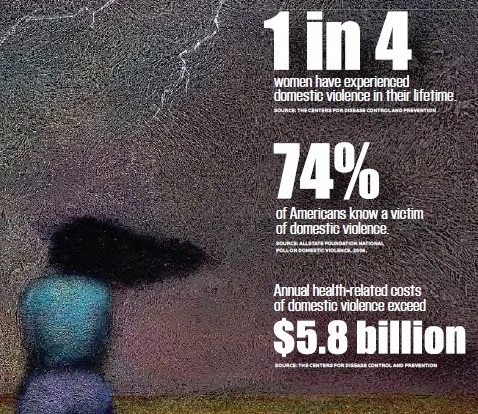
3.0 Recommendations
In response to domestic violence, this report has developed a recommendation that must, based on research, be implemented into the greater Australian community to strengthen the community action in regards to domestic violence. .
The proposed scheme would be to create a government funded, police protected, community run ‘Domestic Violence Safe House’. These houses would be a place where women, children or men can go in the event that they feel threatened at home by family members or partners. There would be at least two volunteers who live at the house and look after people whom come to seek refuge in the house. This would enable the community to get involved with the program, as they could volunteer their houses to the program and strengthen the community action in regards to domestic violence prevention and assistance.
The way the houses would work is that if a victim of domestic violence feels as though their life is in danger, they would be able to go to one of these domestic violence watch houses to stay. The family or couple that has opted to place their house in the program would be able to provide assistance immediately for the victim. They would act as a police liaison, enabling the victim to feel safe and protected. The houses would be clearly marked with signs that enable people to easily identify them. These houses would also be a liaison to the local police, and they would be required to attend to any emergency at the house such as a spouse breaking in. The federal government must fund this initiative, and also be the sole management team for the project. Victims would be able to stay at the houses until their situations were sorted out, or they could re-establish themselves back into the wider community.
The initiative must have the federal government as the sole management team, as this will provide one co-ordinated effort to help victims of domestic violence. The problem today is that there are a whole bunch of services available to victims of domestic violence. These services however, do not work together on a national scale, and diverge their separate ways. If there was an entire national scheme that involved the federal government, then the ability to help a massive number of people would be evident. By involving the federal government, community action is strengthened massively, as the state government will be required to get involved, and local councils will play an integral part in the maintenance of the watch houses. This means that over three levels of government will be involved, which means that the community action at local state and federal levels in relation to domestic violence will be greatly strengthened.
Another program similar to the proposed initiative that strengthens community action is the Neighbourhood Watch. This is a program where houses that are clearly labelled as neighbourhood watch houses allow people with issues that require the assistance of another person to go to the house and stay until the situation defuses or police intervention occurs (Bennett, 2000-2013). Neighbourhood watch in the US has become so popular that over 40% of people live in an area where neighbourhood watch houses exist. An analysis and evaluation of the effectiveness of Neighbourhood watch in the US showed that crime rates in neighbourhood watch areas dropped between 16 and 26% (Bennett, 2000-2013). This demonstrates how effective neighbourhood watch is as a program, and further demonstrates why the implementation of the Domestic violence watch houses would be able to be successful in strengthening community action and reducing rates of domestic violence.
By having the police involved as the primary security, community action is further promoted, and people will be further shown how serious the issue of domestic violence really is. Also, they will provide a level of security that enables victims to go to these safe houses with a sense of safety and not have to fear being followed or further harmed by their abusive partner. A similar program where the police are involved that has proved to work highly effectively is America’s ‘Witness Security Program’ (Service, 2008). This initiative enables witnesses to talk about things that they have seen in an environment where they know that they will be safe due to the fact that the police will be looking after them. This means that not only will the victims feel safe, but going to one of these safe houses will also appeal greatly to them as they know that they will be safe, much like how the Witness Security Program enables people to feel (Service, 2008).
The recommendation will overcome a number of barriers, including fear of leaving an abusive relationship, fear for wellbeing and isolation from society.
Victims will not fear leaving the abusive relationship as they will have a safe place to turn to where the community will understand the problems of the individual and how to help them. They will be able to go to the safe houses and not have to worry about their abusive partner stalking or pursuing them.
The victims will also not have to fear being isolated from society, due to the fact that they will be living in the house with people trying to get over the same situations as them. The victims will develop friendships with these people, and can build strong support networks to enable them to re-establish themselves in the wider community without fear of isolation.
4.0 Conclusion
In conclusion, domestic violence is an issue that cannot be fixed overnight. There will most likely always be people who will either suffer from, or perpetrate domestic violence. This report has evaluated a number of support services that are available to women, and enable them to develop their personal skills in order to leave or recover from a domestic violence situation.
This report found that more funding could enable the service providers to help out more victims, and reduce the rate of turn away. The report also found that domestic violence is an issue that requires more government attention, and children from a young age need to learn about healthy relationships from programs such as Love BiTES.
This report is credible as it was written by someone with no vested emotional interest in the subject, someone whom is not a stakeholder in the issue to domestic violence. This means that the report was unbiased and contained only facts. The large amount of sources also deems the report credible.
The hypothesis for the report was supported in that more funding from the state and federal government would enable service providers the ability to accept more clientele, and reduce the turn away rates of victims of domestic violence.
Domestic violence is an issue that affects everybody, and is something that needs to be brought out from behind closed doors, and into the light of society. The cure to domestic violence is to break the cycle, and the stronger the community action, the closer society will get to eliminating domestic violence from the household.
References and further reading
Bennett, T., 2000-2013. Crime falls with neighbourhood watch. [Online]
Available at: http://www.campbellcollaboration.org/news_/crime_falls_neighborhood_watch.php
[Accessed 02 09 2013].
Centre, D. V. P., 2013. Domesic Violence Prevention Centre. [Online]
Available at: http://www.domesticviolence.com.au/pages/barriers-to-leaving-an-abusive-relationship.php
[Accessed 23 08 2013].
Donna, 2009. DVRC Donnas story. [Online]
Available at: http://www.dvrcv.org.au/stories/donnas-story/
[Accessed 30 08 2013].
Evans, K. G., 1992. Domestic Violence and Women's Rights in Roman Egypt:. [Online]
Available at: http://kassevans.com/EvansK-POxy903_ViolenceAgainstWomen.pdf
[Accessed 02 09 2013].
Healy, J., 2005. Domestic Violence. In: Breaking the Cycle of domestic violence . Thirroul NSW: The Spinney Press.
Heldman, C., 2013. The Disease of Sexual Objectification: Inside a society that turns women into things.. [Online]
Available at: http://educoup.com/2013/04/20/the-disease-of-sexual-objectification-inside-a-society-that-turns-women-into-things/
[Accessed 02 09 2013].
IWCADV, 2010. Ipswich Women's Centre against Domestic Violence. [Online]
Available at: http://www.iwcadv.org.au/aboutus.html
[Accessed 02 09 2013].
IWCADV, 2013. Evaluation of IWCADV [Interview] (13 08 2013).
Michigan, U., 2006. Abuse Hurts, Barriers to leaving. [Online]
Available at: http://hr.umich.edu/stopabuse/about/barriers.html
[Accessed 30 08 2013].
Mulroney, J., 2003. Australian statistics on Domestic Violence, Sydney: Australian Domestic and Family Violence Clearinghouse.
NAPCAN, 2008. Love BiTES. [Online]
Available at: http://napcan.org.au/our-programs/love-bites/
[Accessed 02 09 2013].
News, A. -. H. D., 2013. Hurriyet Daily News. [Online]
Available at: http://www.hurriyetdailynews.com/domestic-violence-ok-sometimes-34-percent-of-turkish-men.aspx?PageID=238&NID=44974&NewsCatID=341
[Accessed 20 8 2013].
NQDVRS, 2013. North Queensland Domestic Violence Resource Service. [Online]
Available at: http://www.nqdvrs.org.au/about_us.html
[Accessed 02 09 2013].
Petrova, E., 2004. Why Russian women want to leave Russia, the real reason. [Online]
Available at: http://www.womenrussia.com/why-russian-women-want-to-leave-russia.htm
[Accessed 01 09 2013].
Rauf, F. A., 2005. Wise Muslim Women. [Online]
Available at: http://www.wisemuslimwomen.org/currentissues/domesticviolence/
[Accessed 22 08 2013].
Service, U. M., 2008. Witness Security Program. [Online]
Available at: http://www.usmarshals.gov/witsec/
[Accessed 02 09 2013].
Shelter, D. A., 2008. FAQ's. [Online]
Available at: http://www.domesticabuseshelter.org/InfoDomesticViolence.htm
[Accessed 04 09 2013].
Zwartz, B., 2008. Local Muslim clerics accused, The Age National. [Online]
Available at: http://www.theage.com.au/national/local-muslim-clerics-accused-20081120-6ctp.html
[Accessed 05 09 2013].



